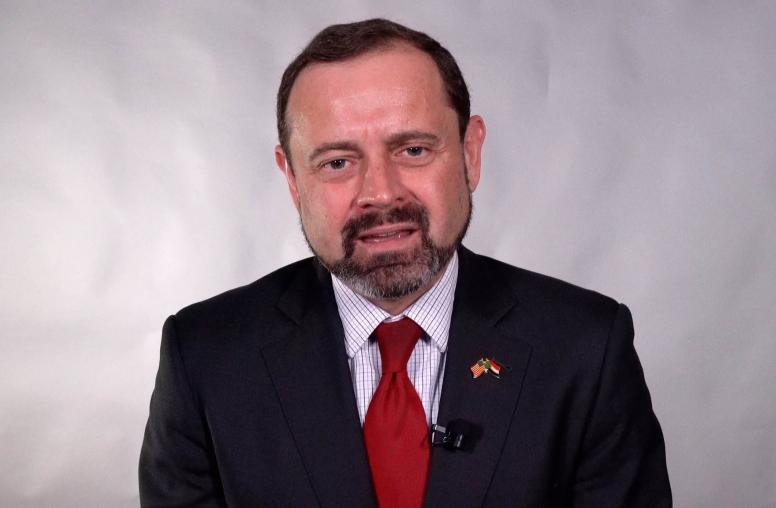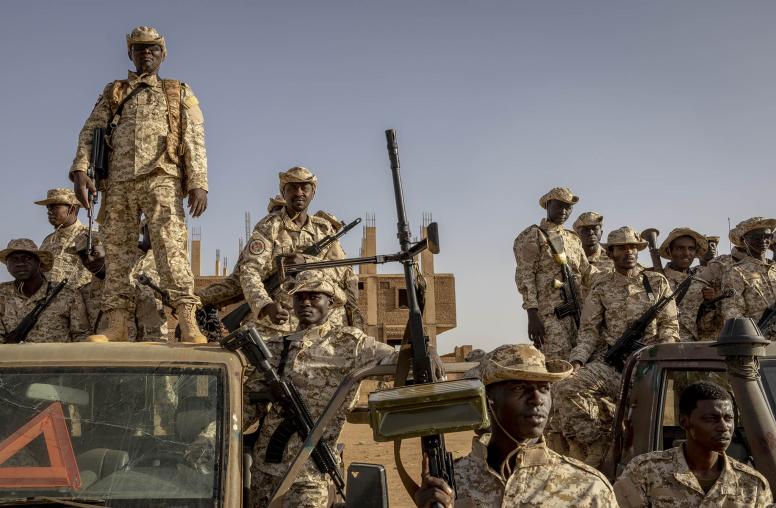42 Months on, How Does Sudan’s Democracy Movement Endure?
Sudanese use old precedents, new methods and youth’s energy to keep demanding civilian rule.
Three and a half years after Sudan’s military deposed the authoritarian ruler, Omar Bashir, in response to massive protests, the current military leadership and divisions among political factions are stalling a return to elected civilian government. This year has brought a deepening economic crisis and violent communal clashes — but also a new wave of nonviolent, grassroots campaigns for a return to democracy. As Sudanese democracy advocates and their international allies seek ways to press the military for that transition, all sides should note, and work to sustain, Sudan’s nonviolent civic action.

Sudan’s complex crisis reflects those in many fragile states of the “global south” — a weak state unable to meet its people’s basic needs, warlord rule in many regions and populations facing hunger or famine as COVID and the Russia-Ukraine war multiply the economic burdens. But an asset that can help Sudan build the more responsive governance it needs is the country’s remarkably vibrant, deeply rooted tradition of nonviolent civic action. To the surprise of many unfamiliar with Sudan’s history, its people repeatedly have used nonviolent campaigns over generations to end the oppressions of British colonial rule and Sudanese military regimes.
In recent years, and again in the past few months, a new generation of young Sudanese activists is building on that tradition. Sudan’s history and the vibrancy of its current civic life make it a promising arena in which U.S. and international allies of democratization can broaden and energize their engagement in hopes of cultivating an example of success for other countries.
After Sudanese mounted a massive, decentralized protest campaign in 2018-2019, forcing the ouster of Bashir’s 30-year dictatorship, civilian and military leaders began a transition toward elected civilian government that General Abdel-Fattah Burhan and other military leaders interrupted with a coup in October last year. Protests surged again after that coup, and security forces have responded more violently, killing scores of people. In July, new protest spread across Sudan, much of it demanding greater action by authorities to halt deadly fighting between the Funj and Hausa communities in the southern state of Blue Nile, where hundreds of thousands of people are displaced from their homes.
Sudan’s New Generation of Nonviolent Action
Sudan’s history of violence includes Africa’s longest civil war and the Darfur genocide, which began in 2003. But the country also has a rich history of nonviolent mobilization. Sudan achieved its independence from Britain without a war in 1956. Popular nonviolent revolutions overthrew the military governments of Ibrahim Abboud in 1964 and Jaafar Numeiri in 1984. Beyond these dramatic moments, Sudan’s history has been shaped by more day-to-day activism, including strikes by professional groups, women’s rights marches, sit-ins and other nonviolent tactics by community groups seeking local changes.
The 2018-2019 revolution against Bashir supercharged this historical repertoire, spreading the tactics of nonviolent action to new communities and issues. Activists in Sudan describe the revolution as a catalyst, and a proof for people across Sudan that nonviolent action can be effective in achieving their goals.
Much of the activism since 2019 is highly localized, not tied to national political conversations. July 2020 saw at least 14 sit-ins across Sudan by groups demanding anything from greater security against cattle theft to the resignation of corrupt public servants. The Ed El Fursan locality in South Darfur experienced what some call Africa’s first environmental sit-in. Citizens blocked a main road for 16 days to demand an end to the cutting down of trees for charcoal production.
Why this recent proliferation of activism? Conversations with participants suggest several reasons:
- The success of 2019. Bashir’s ouster fired a new generation of Sudanese with the lived experience that nonviolent protest works.
- The power of social media. Local protests, once visible only to eyewitnesses, are finding wider audiences across Sudan through Facebook, WhatsApp and Twitter.
- Greater mutual support among activist groups. Solidarity and empathy have grown among nationally engaged activists in Khartoum and locally focused groups in the provinces that are working to improve life in Sudan, even if their specific objectives may differ.
- Strengthened organization. The neighborhood-level “resistance committees” that were central to the 2018-2019 movement have continued to grow and become institutionalized. For example, they have developed better ways to sustain activity even when authorities shut down internet access.
Government responses to Sudan’s explosion in activism have varied. In some cases, officials have met protesters and offered concessions. They did so in 2020, when thousands of people sat in outside government offices in the Darfur town of Nertiti, demanding better security against violence by armed militias. In other cases, security forces have violently attacked, arrested or abused nonviolent protesters, according to independent news media and human rights monitors.
Amplifying a Positive Pattern
Sudan’s expansion of local activism after a major nonviolent campaign reflects a historical pattern. Portugal’s 1974 “Carnation Revolution” sparked a decades-long increase in civic activism that transformed Portuguese politics and society. In Brazil, feminist, labor and indigenous activists built on the momentum of the country’s 1984 Diretas Ja (Direct Elections Now) movement to mobilize campaigns in the late 1980s that, among other things, led to a constitutionally protected right to strike.
While maintaining nonviolent campaigns is often difficult, these historical cases offer encouraging indicators for Sudan. A country with high levels of civic mobilization is much more likely to democratize, and to build qualitatively better democracy, as a newly engaged public holds transitional leaders to account and pushes for more inclusive politics.
Yet Sudan faces many challenges along this road. While General Burhan has said the military will step back from politics, he has left vital details of the plan unclear. And Sudan’s many crises — in its economy, security and food supply — could easily worsen. In the months after the first U.S ambassador to Sudan in 25 years arrived in Khartoum, U.S. and international policies on Sudan should reach out broadly and energetically to engage the country’s nonviolent pro-democracy groups. In interviews, Sudanese democracy advocates lament what they feel has been lagging international and U.S. support. They urge international engagement not simply with prodemocracy elites in conferences at Khartoum’s hotels, but more broadly and inclusively with groups working at local levels nationwide. Practitioners of nonviolence emphasize that international allies should encourage the broadening of Sudanese civic activities to make them as inclusive as possible.
The people of Sudan continue to build on their long history of nonviolent action and the catalyzing example of their 2018-2019 revolution in hope of finding a peaceful path back to civilian governance and to a strengthened democracy. Policymakers and others who seek stability, democracy and rule of law should shape their approach in Sudan to sustain and invigorate this nonviolent movement.



